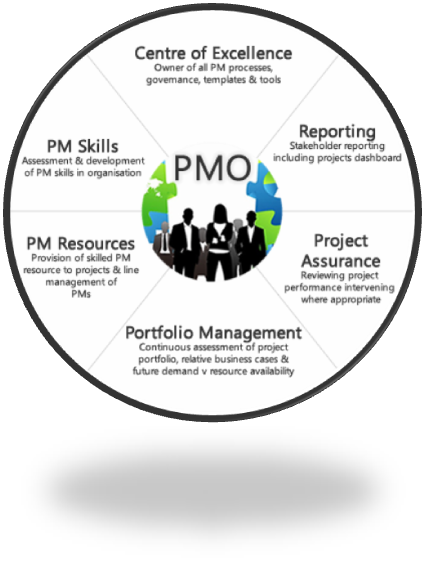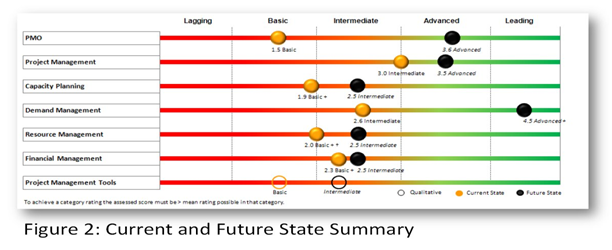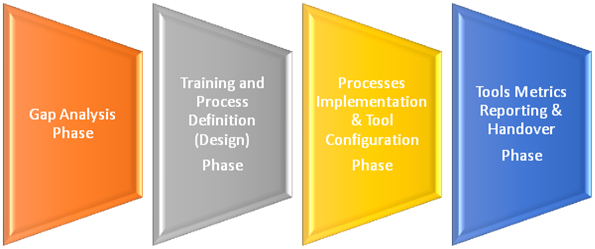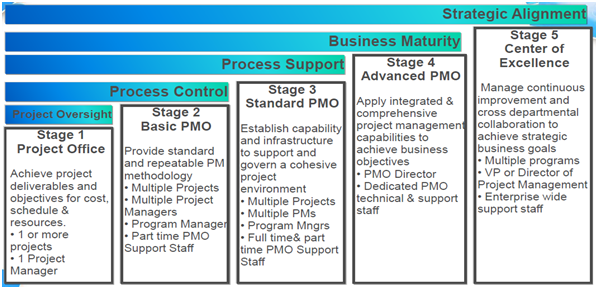IT Strategic partner for global organizations
- info@Infystrat.com
- SA : +27 010 109 4100 | INDIA : +91 99644 10087 | US : +1 901 405 1230
No matter how effective your project and program management efforts are, they can always be improved. It may be that the people involved in the project aren’t familiar with the proven disciplines of project management for addressing risk, quality, scheduling and so on. It might be that the people working so hard on the project should stay focused on their areas of expertise and leave the project management to those who are trained in that skill set. It could be that borrowing best practices from other industries can enhance their own practices.
When something isn’t going right in a project -- progress is delayed, there’s a lack of visibility into project status, scope is out of control -- a project or program management office or PMO could be the antidote. The PMO acts as a navigator. As the driver propels the car, the navigator reads the map. Even when the driver knows all of the operations of the car, if he or she doesn’t have a "co-pilot" recommending where to go, when to turn and what the way is, the car -- the project -- will have a longer time reaching the final destination -- the goal.
The PMO provides a synthesis of the project status (schedule, risks, etc.) by delivering relevant data such as metrics or key performance indicators (KPIs) via tools such as dashboards and reports that enable company leaders to make better informed decisions.
The role of the Project or Programme Management Office (PMO) varies significantly from organisation to organisation. Our expertise ensures your PMO delivers the maximum value for your organisation, driven by a fit-for-purpose design with appropriately skilled resource. The graphic below summarises the six key areas of PMO scope:

Because the success of projects primarily revolves around the activities of human beings, to succeed in a project, all stakeholders must be involved and committed to reaching the same goals as the project itself. A PMO helps facilitate, coordinate, communicate, lead and monitor. Those in the PMO are in a position to take into account all the people and drive the change management aspects of the project.
While the client will make the decisions, the PMO acts as an advisor, bringing experience, lessons learned and best practices from other industries.
Setting up your first organizational PMO is a project itself. In this article I summarize the five steps for setting up your first PMO.
As painful as self-analysis can be, the problems infecting the projects have to be identified and the potential solutions defined. This process calls for analysis of the current project team structure, organization and ways of working, as well as the interfaces that exist -- interactions with other departments along with suppliers and clients. The results of the analysis form the content of the business case for setting up the PMO.

Once a business sponsor buys into the business case for the PMO and signs on the dotted line to support the work and fund it, it’s time to develop the PMO charter. The charter spells out what the PMO is expected to accomplish and how success will be measured. It provides a framework for project governance, the structure of the PMO and its deliverables. Because project managers will need to "buy" into the proposed changes, call on your buddies and PMO advocates among these stakeholders to provide feedback on the proposal and encourage them to "sell" the PMO structure to those who would oppose or resist it.

It’s time to put the PMO structure in place. This the stage where you’ll establish procedures, methods and tool use, begin the work of filling in the details of the governance model (and possibly a governance council) and start to execute on your PMO plan for influencing quality, cost, delivery and performance (QCDP), especially in those problematic projects. Stay in touch with stakeholders to understand their challenges. Regularly review progress status against the goals set for the PMO.
Since a primary objective for having a PMO in the first place is to push for continual improvement, formalize those activities that are having a major impact on project outcome. For example, say that pockets of people are finally entering timely updates into the enterprise project system regarding tasks, resources, and budget and so on because the PMO has made the form easier to use. If that results in improvements in project reporting and better management decision-making, it’s worth embedding the practice of updating project details into required job duties. Even though this adoption of new processes and work habits becomes a change management challenge, remember that success begets enthusiasm.
Regular reviews will quickly tell you whether your PMO is finding success in its current objectives. Is that good enough? Perhaps. Or it may be that the organization wants the PMO that has proven its value to continue its development and maturation. As IT analyst firm Gartner explains, the scope of PMO work can be expected to grow "from tactical to strategic," and the scope of initiatives undertaken by the PMO will broaden from functional projects to enterprise-wide work. "Once the PMO has earned credibility with the business," Gartner reports, "it usually receives requests to help manage business projects."
Making step-level improvements in the work of the PMO may require expert outside help to show the PMO how to better control, manage and optimize its results. In that scenario, the PMO is a trusted partner, committed alongside the client to provide the energy needed to reach the goals of the project.

But I must explain to you how all this mistaken denouncing praising pain was born and I will give you

Copyright © 2020 Infystrat. All Rights Reserved